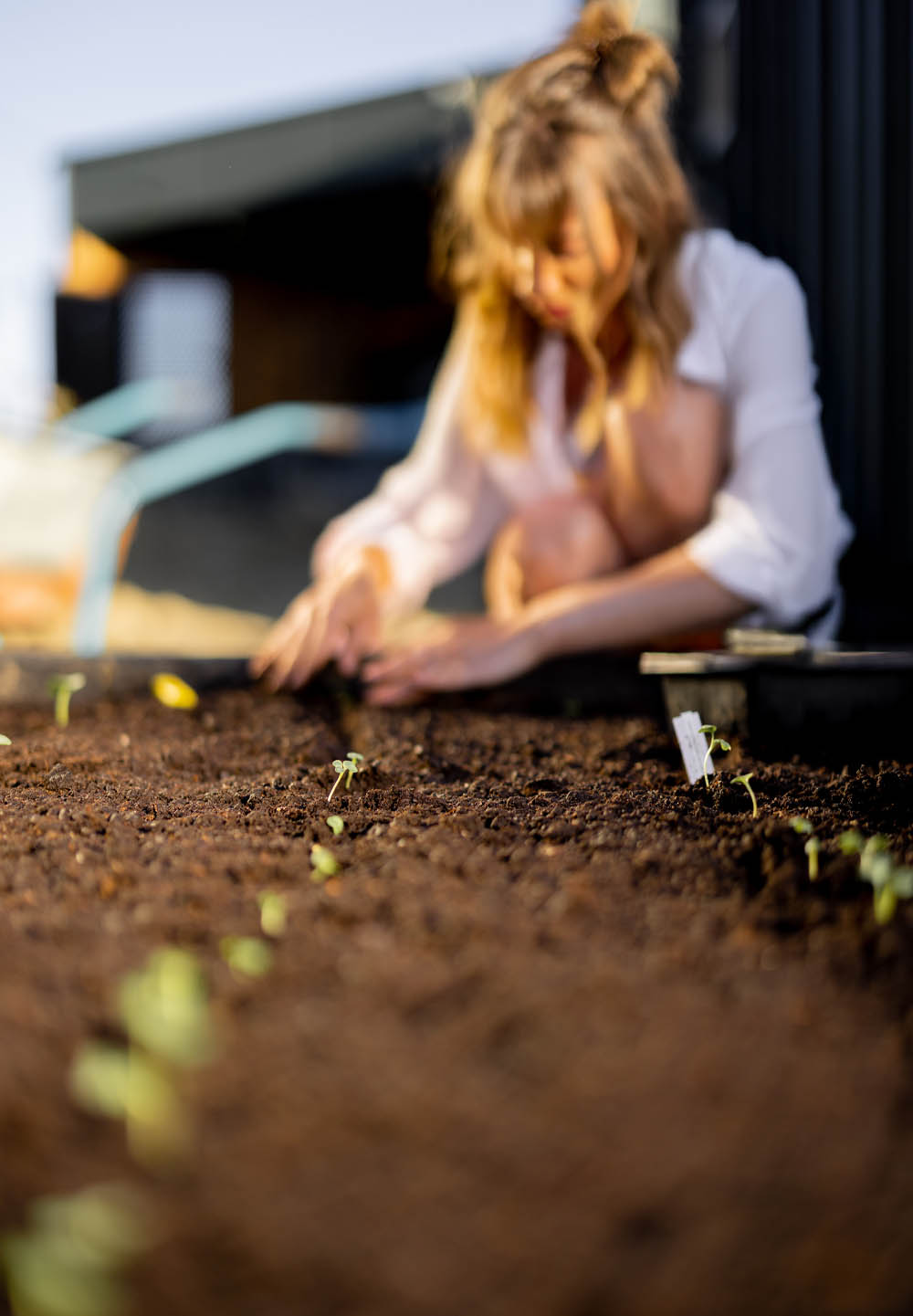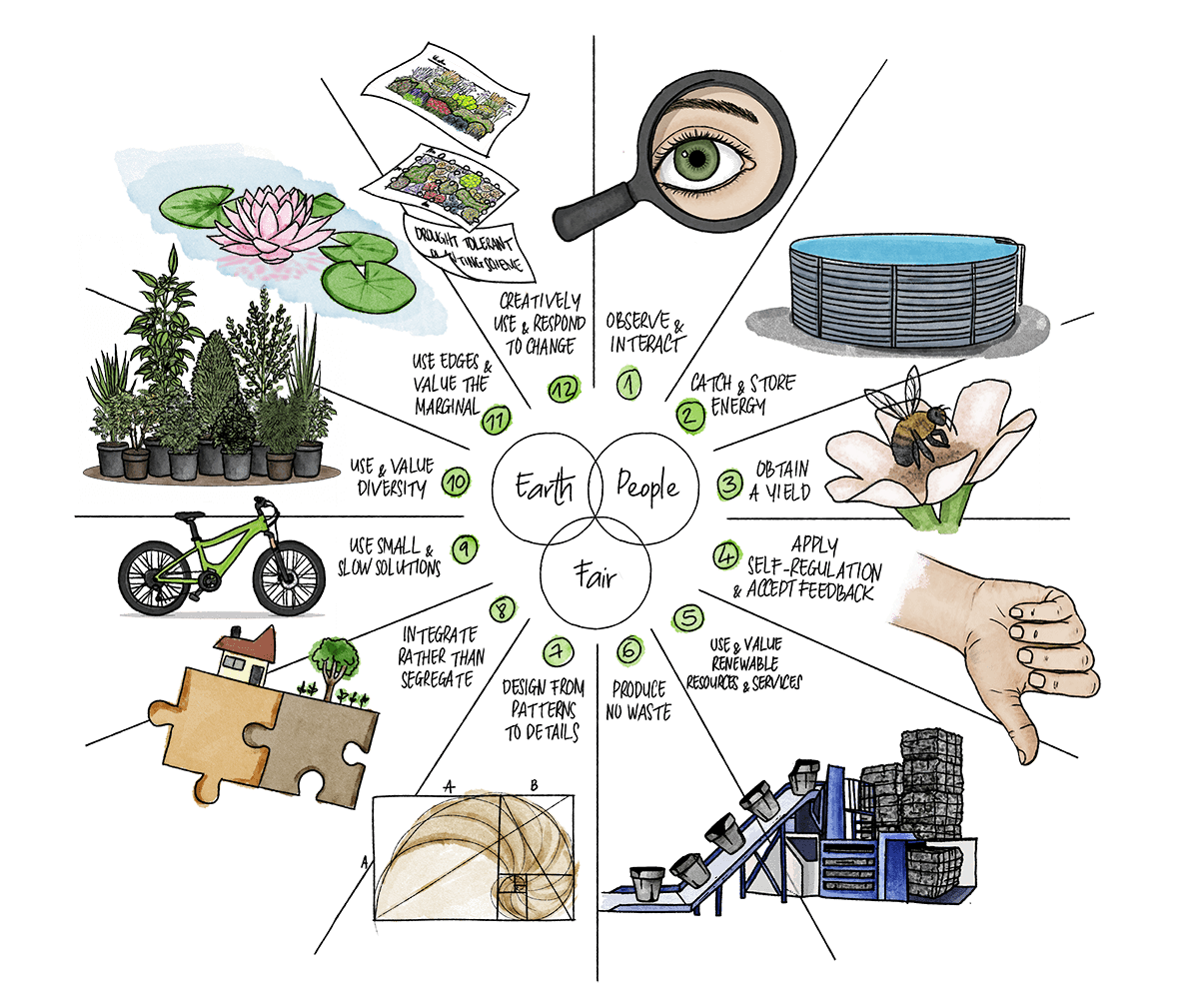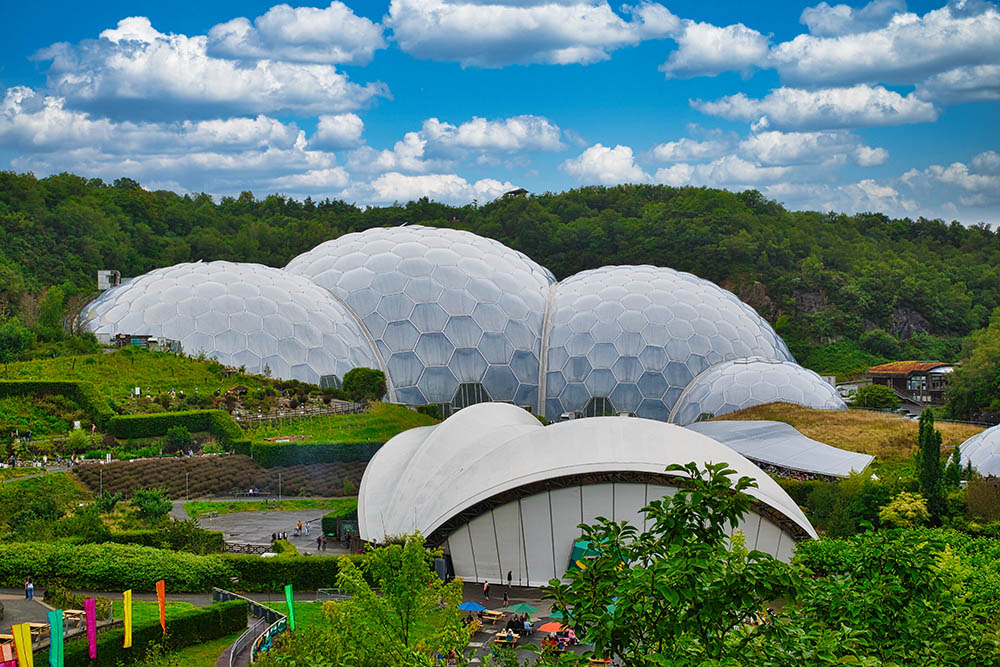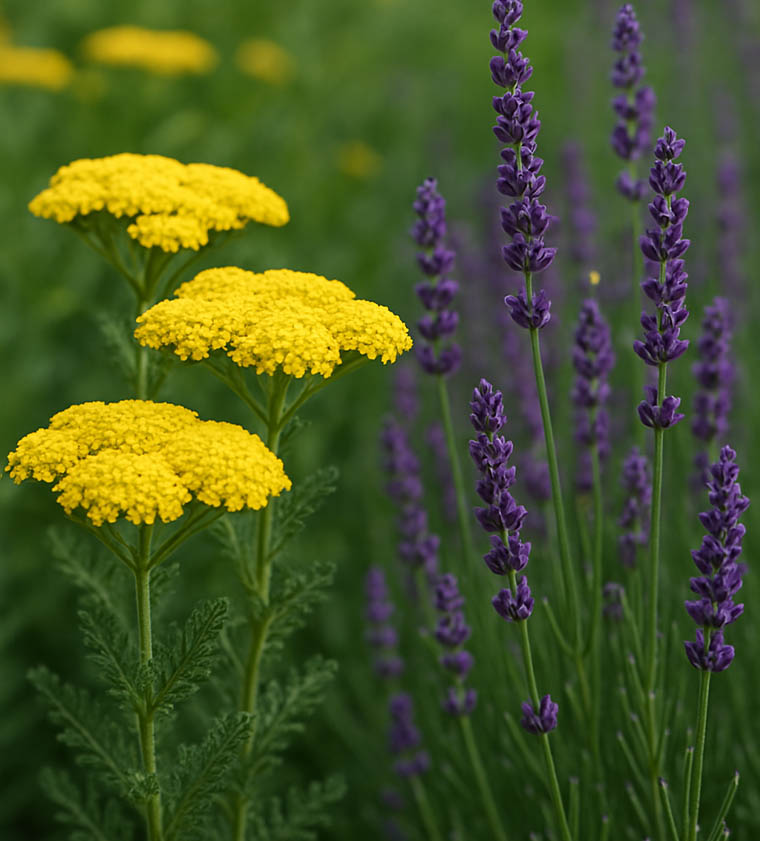What is permaculture, and why is it sustainable?
Promoting sustainable and resilient landscapes
Permaculture is a method of sustainable land management that has been inspired by nature. It involves creating systems that work in harmony with nature, to ensure long-term sustainability. By taking care of the soil and the planet as a whole, we maintain healthy plants and ecosystems as a result. Part of this approach also involves looking after our communities. An important aspect of permaculture involves sharing surplus resources and limiting consumption, to ensure that everyone has sufficient supply. By adopting permaculture principles, we can create resilient landscapes, reduce waste, and build stronger communities.
Permaculture is a design approach that seeks to create sustainable and self-sufficient ecosystems, by mimicking the patterns and relationships found in nature. Originally referred to as “permanent agriculture”, the practice was pioneered by Bill Mollison, a senior lecturer in Environmental Psychology at the University of Tasmania, and David Holmgren, a graduate student at the Tasmanian College of Advanced Education. The term has since expanded to incorporate aspects of ecological building, community resilience, and sustainable living.
When applied to horticulture, permaculture focusses on creating diverse, resilient, and productive landscapes that require minimal external inputs. These permaculture principles are used to design gardens that work harmoniously with nature. This involves practices such as companion planting, where different plants are grown together to benefit each other. Permaculture also promotes the planting of perennials, which live for several years and reduce the need for replanting.
Water conservation is another key aspect of permaculture. Water conservation methods, such as rainwater harvesting and swales, are used to capture and store rainwater, reducing the need for irrigation. Mulching with organic materials, including wood chips or straw, can help to retain moisture in the soil and suppress weeds — further enhancing the garden’s sustainability.
Permaculture gardens are designed to be self-sustaining and resilient. By incorporating a diverse range of plants and creating interconnected systems, these gardens can cope with environmental stresses, such as drought or pest infestations. Not only does this approach benefit the environment, but it also reduces maintenance and reliance on external resources, such as pesticides.

Did you know?
The original inspiration for the practices that define permaculture is drawn from Aboriginal Tasmanian belief systems, as well as other traditional cultures.
The 12 principles of permaculture

The 12 principles of permaculture were developed to provide a framework for designing sustainable systems. These principles are inspired by natural ecosystems and working with, rather than against, nature:
1. Observe and interact – Understand the environment before taking action. Careful observation allows us to design systems that work in harmony with its natural conditions, rather than against it. For example, observing where water tends to pool after a period of heavy rain, or spotting areas that receive full sun or shade.
2. Catch and store energy – Use and store natural energy sources, such as sunlight, wind, and water, to create a resilient landscape. Examples include installing solar panels, or collecting rainwater for irrigation.
3. Obtain a yield – Design systems that provide tangible benefits, including food, energy, or shelter, whilst maintaining long-term sustainability. Growing vegetables in a garden to feed a family and reduce food expenses is an example of this principle.
4. Apply self-regulation and accept feedback – Continuously monitor and adjust the system to prevent overuse or depletion of resources. For example, if soil fertility is in decline, rotate crops and add compost to restore balance.
5. Use and value renewable resources and services – Prioritise natural, renewable resources over non-renewable ones to reduce environmental impact, such as wood from sustainably managed forests.
6. Produce no waste – Design systems where waste is minimised or repurposed into something useful. Composting is a great example; food scraps can be composted to create nutrient-rich soil, instead of sending them to landfill.
7. Design from patterns to details – Observe patterns in nature and society, then use them as a guide for designing sustainable systems. Patterns can include a spiral shape, to maximise growing space, as this is seen in natural ecosystems.
8. Integrate rather than segregate – Encourage beneficial relationships between elements of a system to increase efficiency and resilience. Planting companion crops together, such as tomatoes and basil, is an example of this, as they help each other thrive.
9. Use small and slow solutions – Smaller, gradual changes are often more sustainable and easier to manage than large-scale interventions. For instance, starting with a smaller space, instead of converting an entire farm at once.
10. Use and value diversity – Biodiversity strengthens resilience against pests, diseases, and environmental changes. Growing multiple crops, rather than a monoculture, to improve ecosystem health.
11. Use edges and value the marginal – The most productive and diverse spaces are often at the edges, where different systems meet. A pond’s edge, with its aquatic plants, land plants, and mixture of wildlife, supports more biodiversity than deep water or dry land alone.
12. Creatively use and respond to change – Instead of resisting change, adapt and use it to improve the system. For example, if climate change leads to drought, switch to drought-tolerant plants instead of struggling with water-intensive crops.
Three core ethics
Permaculture is guided by three core ethics, and these are the foundation for all its principles and practices. These consist of Earth Care, People Care, and Fair Share. They ensure that we regenerate natural resources, support human well-being, and share surplus fairly. By following these ethics, we can create communities and environments that thrive for generations to come.
1. Earth Care
This highlights the importance of maintaining the health of our planet, including all living and non-living components. It focusses on respecting and nurturing the Earth to ensure its health sustainability, by preserving natural resources and ecosystems for future generations. Restoring degraded land is a part of this, by revitalising any areas that have been affected by erosion, deforestation, or over-farming.
2. People Care
People Care involves supporting the well-being of individuals and communities. Human needs should be met whilst also taking care to promote resilience, collaboration, and equity. An example of People Care is creating a community garden where social bonds can be strengthened, fresh food can be grown, and the well-being needs of local residents can be ensured.
3. Fair Share
The third ethic encourages the distribution of excess resources, such as food, energy, or knowledge, to benefit the community and environment, whilst maintaining sustainability and balance. Fair Share also advocates for setting limits on consumption, so as not to overuse finite resources.
Greenwood is practising a number of permaculture methods across its nurseries, including water harvesting, supporting the community with its Greenwood Community scheme, and waste management with G Cycle. We have invested in rainwater harvesting systems and increased our capacity for water storage, as well as using drip irrigation and best watering practices across the nurseries. Our Greenwood Community scheme supports local, regional, and national projects by donating plants and sundries to enhance green spaces and support biodiversity. Our industry-leading recycling scheme, G Cycle, has prevented over 50,000 wooden crates and pallets going to landfill, and our pot washing machine has enabled us to clean and reuse 960,000 pots.
Examples of permaculture in the UK
There are a number of notable permaculture projects that demonstrate sustainable design and community engagement. Some examples include:
The Eden Project, Cornwall
The Eden Project is one of the most famous tourist attractions in the UK. It’s situated in a reclaimed clay pit, and features massive biomes housing diverse plant species and outdoor gardens designed using permaculture principles. It serves as both a horticultural attraction and an educational centre, showcasing the potential of large-scale sustainable design.
Martin Crawford’s Forest Garden, Devon
The forest garden was established over 30 years ago on the Dartington Estate, and is a pioneering example of agroforestry, which integrates trees and various crops to create a self-sustaining ecosystem. Martin Crawford’s work has significantly influenced sustainable agricultural practices worldwide.

The Eden Project, Cornwall
Scotswood Garden, Newcastle
Scotswood Garden is a thriving community garden that has been operating for over 30 years, serving as a hub for local engagement and education. It shows how permaculture principles can be applied in urban settings to create community spirit and promote environmental awareness.
The Quadrangle Forest Garden, Kent
Located near Shoreham, the Quadrangle Forest Garden is a community-driven initiative that transformed a degraded field into a productive forest garden using permaculture principles. This project benefits soil microbiology, boosts biodiversity, and improves water retention, thereby reducing flood risks in the River Darent area. It serves as an educational and therapeutic resource for both the local community and visitors.
City Soil Lab, East London
During the COVID-19 lockdowns, Anthony Ussher transformed the garden of James Brine House in East London into a communal space. Utilising fermentation composting, the project converts food waste into nutrient-rich soil, enhancing local biodiversity. Supported by Tower Hamlets Council, City Soil Lab aims to replicate this composting model across London, providing a sustainable waste management solution for urban areas.
Plant species for permaculture gardens

Achillea and Lavandula
Achillea
Achillea is a striking perennial with green feathery foliage and flat-topped flowers in colours including yellow, red, and white. Its flowers are ideal for attracting pollinators, including bees and butterflies, and its deep roots help to improve soil structure.
Lavandula
Lavandula is a vibrant and aromatic shrub, with linear, grey-green leaves and an abundance of flowers on upright stems in a range of colours, including purple, blue, and white. Its strong scent is ideal for repelling pests, such as aphids, but is also a pleasant addition to gardens.
Mentha spicata
Commonly known as garden mint, Mentha spicata is a perennial that forms clumps of bright green, sweetly-scented leaves which are widely used in teas and salads. Be mindful of its vigorous growth; for this reason it’s best kept in containers or designated areas.
Rosmarinus Officinalis
An aromatic evergreen shrub that has narrow green leaves with white undersides, and pretty light blue to white flowers in late spring. It thrives in dry climates and its foliage is widely used for culinary purposes. Its scent is great for deterring pests.

